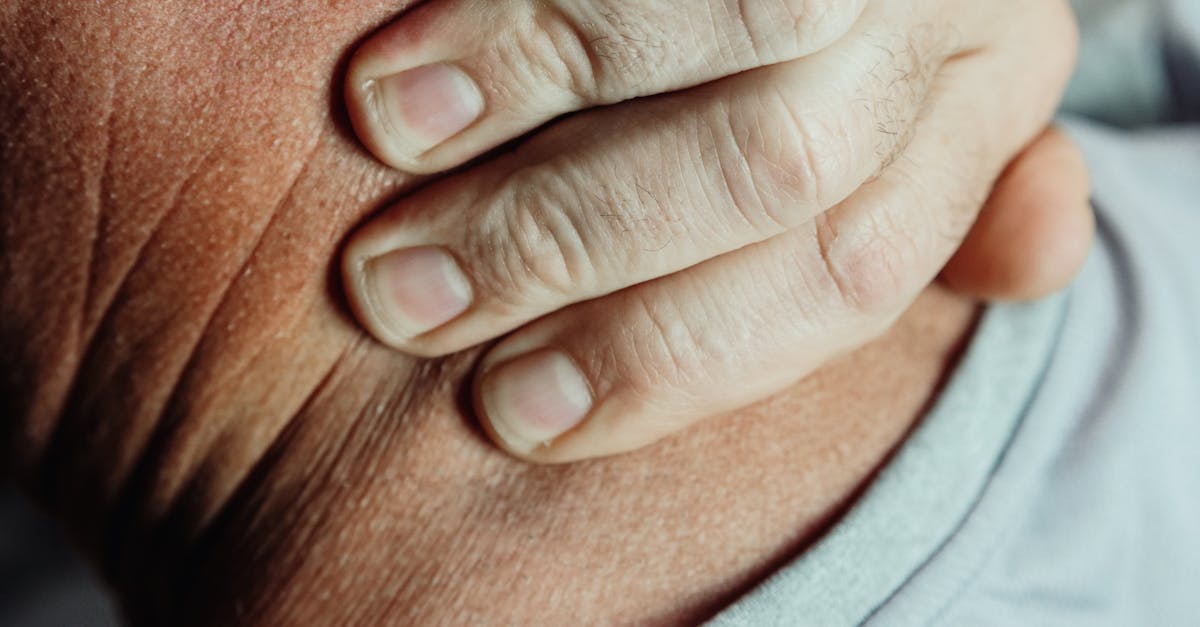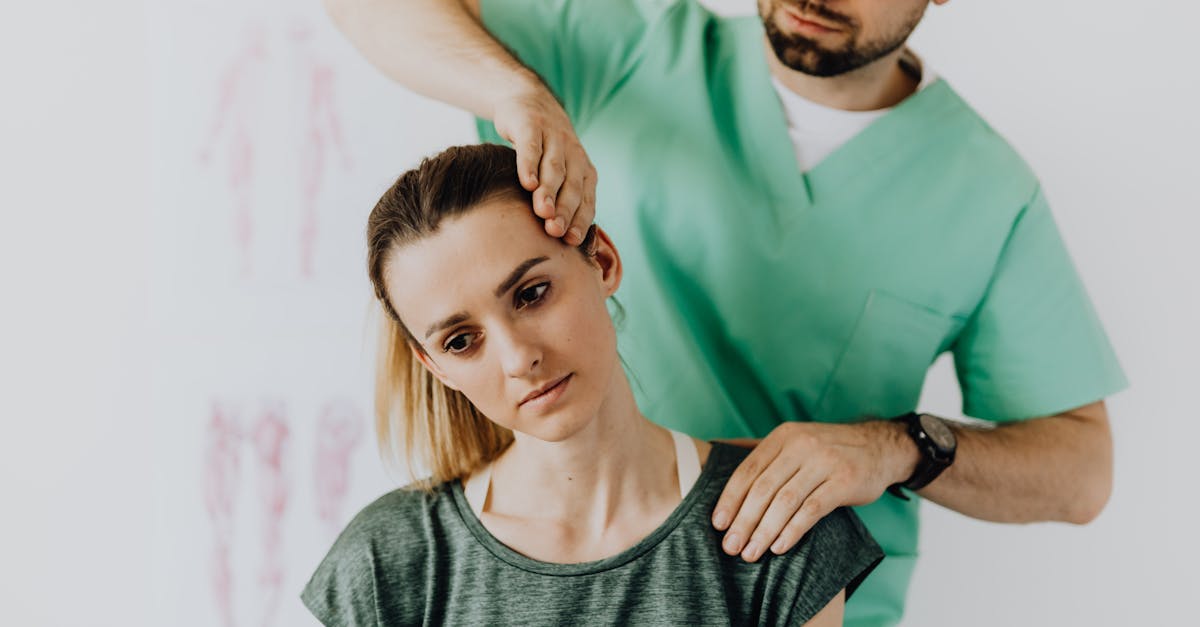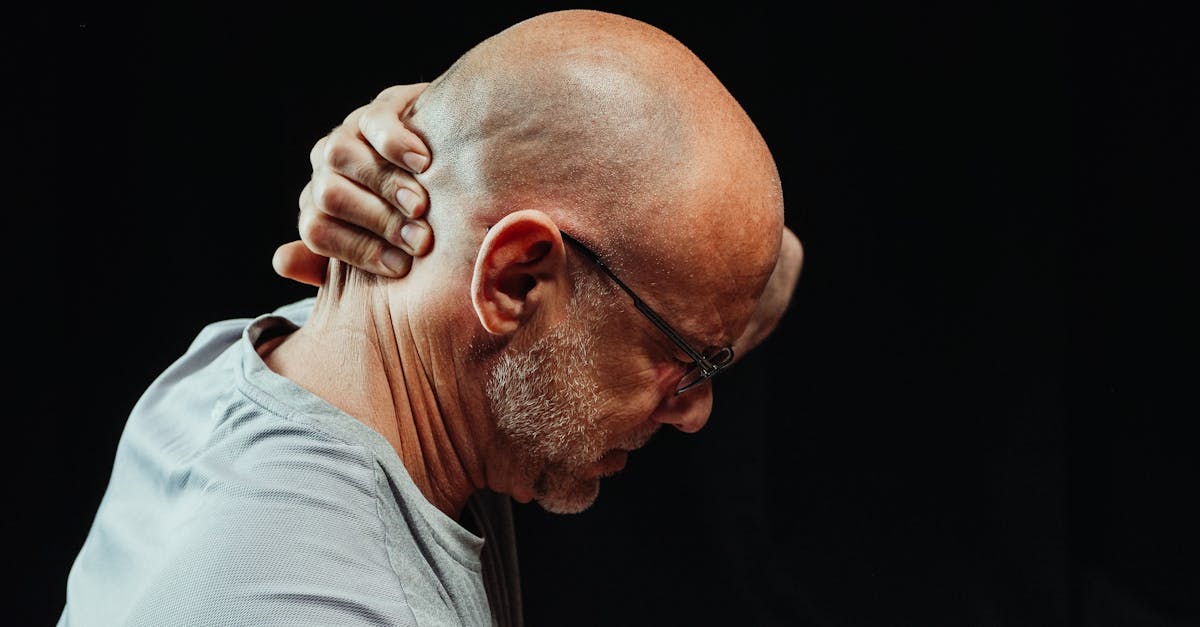|
In Short, understanding the reasons behind winter’s neck pain surge is vital for managing discomfort effectively. The cold weather often leads to muscle constriction, decreased mobility, and hydration issues, exacerbating existing pains. Recognizing these factors enables individuals to incorporate strategies like staying hydrated and practicing good posture. This proactive approach not only alleviates discomfort but also enhances overall well-being during the winter months, allowing people to regain their freedom of movement. |
Exploring the Reasons Behind Winter’s Neck Pain Surge highlights the key factors contributing to increased neck pain during the cold months. Cold temperatures often result in muscle constriction and reduced mobility, leading to heightened tension and discomfort in the neck area. Additionally, the rise in winter illnesses combined with poor posture habits and decreased hydration levels further intensify neck pain. Understanding these causes can help individuals adopt effective strategies for managing their neck health in winter.

Discover the Power of Pulse Align: Your Path to Enhanced Well-Being
At Pulse Align, we offer a revolutionary approach that harnesses the body’s innate ability to restore balance and improve posture through gentle, imperceptible pulses. This innovative methodology emphasizes the significance of muscle tone symmetry, promoting overall well-being and facilitating a return to normal function. By engaging in our services, clients often experience a natural reduction in tension and discomfort, enhancing their quality of life without invasive techniques.
The Gentle Approach to Recalibration
Unlike traditional methods that focus directly on discomfort, Pulse Align is dedicated to aiding the body in its natural recalibration processes. This gentle, non-invasive approach often results in improved comfort and posture, allowing clients to move freely and engage fully in their daily activities. Our primary focus is on fostering an environment where the body can function harmoniously, ultimately enhancing overall wellness.
Personalized Wellness Journeys
At Pulse Align, we take pride in our individualized approach tailored to the unique needs of each client. Testimonials from our community reflect remarkable improvements in tension and postural balance. Clients often share their experiences of feeling more grounded and aligned, allowing them to reclaim their vitality. Our family-friendly philosophy ensures that individuals of all ages—children, pregnant women, and everyone in between—can benefit from our supportive services.
Your Next Steps to Wellness
Ready to begin your journey towards enhanced well-being? We invite you to explore the transformative experiences at Pulse Align. Visit our website to learn more about our services and find a location near you, including clinics in La Prairie, Mont-Royal, Terrebonne, and many more cities. Booking a consultation for yourself or your family could be the next step towards rediscovering balance and comfort in your life. Remember, our safe, non-invasive, and family-friendly approach works alongside your healthcare services, ensuring you have comprehensive support in your wellness journey.
Medical Disclaimer
The information and advice provided on this site do not replace the advice, diagnosis, or treatment of a healthcare professional. Please note that Pulse Align complements, but does not replace, medical care. Clients should remain under the supervision of their healthcare team for any medical condition. Any symptom relief reported by clients is the result of the body’s natural ability to restore balance, not Pulse Align’s direct intervention.
- Cold Temperatures: Cause muscle constriction and increased tension.
- Reduced Physical Activity: Leads to joint stiffness and decreased muscle flexibility.
- Dehydration: Impairs muscle elasticity, exacerbating discomfort.
- Poor Posture: Tight clothing and bundling up can stress the neck.
- Illness: Common colds and flu can increase overall body tension.
- Increased Indoor Time: Prolonged sitting and bad ergonomics contribute to neck strain.
- Winter Sports: Physical activity can strain neck muscles if not managed properly.
- Cold Air Exposure: Drafts can trigger sudden neck spasms.

Understanding Winter’s Neck Pain Surge
As winter sets in, many individuals experience a notable increase in neck pain, which can disrupt daily life and overall well-being. Several factors contribute to this seasonal surge in discomfort, including muscle constriction, reduced mobility, dehydration, poor posture, and illnesses prevalent in cold weather. By exploring these underlying reasons, individuals can adopt practical strategies to alleviate their neck discomfort and enhance their quality of life during the colder months.
Muscle Constriction and Tension
The first and foremost reason for increased neck pain during winter is the body’s natural response to cold temperatures. When exposed to cold air, muscles tend to contract as a way to preserve heat, leading to heightened tension in the neck and shoulder regions. This involuntary muscle tightness can be particularly detrimental for those who already suffer from pre-existing neck problems, intensifying their discomfort and contributing to a cycle of pain.
Reduced Mobility
During winter months, outdoor activities often decrease due to unfavorable weather conditions, resulting in a more sedentary lifestyle. This lack of movement can lead to joint stiffness and decreased muscle flexibility, exacerbating existing neck pain. It is essential to incorporate regular stretching and mobility exercises, even indoors, to counteract the negative effects of inactivity and to maintain overall neck health.
The Impact of Dehydration
Another contributing factor to winter neck pain is dehydration. People tend to drink less water during the colder months, often overlooking the importance of hydration. Proper fluid intake is vital for maintaining muscle elasticity and joint lubrication. Dehydration can lead to increased stiffness and discomfort in the neck, making it crucial to prioritize hydration as part of a proactive plan for pain management during winter.
Poor Posture Habits
Winter often necessitates bundling up in layers, and the resulting poor posture can contribute to neck strain. When individuals hunch or adopt awkward positions to stay warm, it creates additional stress on the neck over time. Being mindful of posture while sitting, standing, or engaging in daily activities can help alleviate discomfort. Employing ergonomic furniture and taking regular breaks to stretch can support better neck alignment.
The Role of Winter Illnesses
The common cold and flu typically flourish in winter, leading to increased levels of bodily stress. This stress can manifest as neck pain due to tension resulting from illness and prolonged periods of rest. Understanding how these illnesses contribute to neck discomfort highlights the multifaceted nature of neck pain during the winter months.
Preventative Measures and Holistic Approaches
To effectively combat winter-associated neck pain, adopting a holistic approach is imperative. Prioritizing hydration, engaging in regular physical activity, and practicing good posture are key components of a comprehensive strategy. Stretching exercises designed specifically for the neck and upper back can help maintain flexibility and reduce tension. Additionally, utilizing heat therapy can offer soothing relief to cold-induced discomfort.
Incorporating the principles of Pulse Align can also empower individuals on their health journeys by focusing on neuromuscular health, promoting symmetry, and assisting with the recalibration of the nervous system. By understanding the reasons behind winter’s neck pain surge and implementing these strategies, individuals can foster a supportive environment for recovery and enhance their overall well-being during the colder months.
| Cause | Wellness Approach |
|---|---|
| Cold Temperatures | Promote gentle movements and warmth to encourage relaxation. |
| Muscle Contraction | Focus on stretches and techniques that nurture natural flexibility. |
| Reduced Mobility | Encourage regular movement and light exercise to enhance circulation. |
| Dehydration | Remind individuals to maintain proper hydration to support muscle health. |
| Poor Posture | Educate on ergonomics to foster supportive alignments while resting or working. |
| Winter Activities | Promote balance and proper techniques in winter sports to minimize stress. |
| Increased Illness | Encourage holistic self-care practices to strengthen immune function. |
| Cold Air Exposure | Simplify the environment to provide comfort and warmth for the body. |
| Sleep Disruptions | Highlight the importance of creating restful sleep conditions for recovery. |
| Seasonal Stress | Advocate for mindfulness and stress-reducing activities that support equilibrium. |

Client Experiences: Discovering Wellness Through Pulse Align
Clients across regions such as La Prairie, Mont-Royal, and Terrebonne have shared their transformative journeys with Pulse Align, emphasizing the powerful effects of our unique approach to wellness and holistic recovery. Many have reported noticeable improvements in their neck pain, particularly during the challenging winter months. These individuals appreciate how our method facilitates their body’s natural ability to recalibrate and restore balance, allowing them to reclaim their freedom of movement.
One client from Les Escoumins expressed her satisfaction by saying, “I never realized how much my neck pain was tied to the cold until I started my sessions at Pulse Align. The gentle methods helped me feel more aligned and balanced. Now, I can enjoy winter activities without the discomfort that used to hold me back.” Such feedback reflects a common sentiment among clients who find that our tailored approach promotes a greater sense of well-being.
Another client hailing from Châteauguay shared, “After trying various treatments for my chronic neck pain, I was pleasantly surprised by the natural results I experienced at Pulse Align. Their focus on the body’s intrinsic healing capabilities made a significant difference in my daily comfort.” This underscores how individuals in areas like Chicoutimi can benefit from our services, which emphasize enhancing physical function through a holistic lens.
As reports continue to emerge from regions such as Sainte-Marie and Deux-Montagnes, clients are discovering that Pulse Align not only alleviates pain but also fosters an ongoing journey towards health empowerment. “I feel more in tune with my body and am now better equipped to deal with the strains of winter,” noted a satisfied client from Saint-Jérôme.
Whether you’re in Panama City or closer to home, exploring the healing experience at Pulse Align may offer the support needed for individuals and families alike. Patients appreciate that our clinic collaborates with their healthcare teams to tailor solutions that resonate with their goals of wellness. You can find more information on how to integrate these transformative services into your life by visiting Our Clinics.
As the winter months approach, many individuals notice an alarming increase in incidences of neck pain. While this seasonal discomfort might seem like a mere annoyance, it is essential to understand the underlying factors contributing to this prevalent issue. Research and expert opinions point toward a multifaceted relationship between cold weather and muscle tension, revealing that this seasonal uptick in neck pain demands attention and proactive management strategies.
Dr. Sylvain Desforges, a noted expert in osteopathy, naturopathy, and manual medicine, serves as a cornerstone in the conversation surrounding neck pain and its winter surge. As the founding president of TAGMED clinics and the ACMA association, he has long championed innovative methods to effectively tackle chronic pain management challenges. His approach combines traditional wisdom with cutting-edge technology to optimize patient health and well-being.
One of the key reasons behind increased neck pain during winter can be attributed to muscle constriction. As temperatures drop, the body’s natural response is to tighten muscles to preserve heat. This involuntary response often leads to heightened tension in the neck region, resulting in discomfort. For those already prone to neck issues, this added layer of tension can exacerbate pre-existing conditions, leading to significant pain. Dr. Desforges emphasizes the importance of managing muscle tension through appropriate techniques, helping individuals mitigate these seasonal setbacks.
In addition to muscle constriction, winter often brings with it a decrease in overall activity levels. Many people prefer to stay indoors when the weather turns cold, leading to a lack of movement. Prolonged periods of inactivity can cause joint stiffness and reduced muscle flexibility. Dr. Desforges suggests that maintaining physical activity, even during the winter months, is crucial for combatting neck pain. Simple stretches and specific exercises can help keep the muscles limber and the joints flexible, preventing discomfort from manifesting as pain.
Hydration is yet another often-overlooked factor contributing to neck pain during winter. Cold air is frequently drier, and many people find themselves drinking less water. This can lead to dehydration, which impacts muscle elasticity and joint lubrication. Maintaining proper hydration levels can significantly aid in reducing stiffness and discomfort in the neck area, allowing for better mobility and ease of movement.
Dr. Desforges also points out the role of postural issues that often arise during the colder months. Many individuals hunch or adopt awkward positions to stay warm, particularly while seated indoors for extended periods. This poor posture can lead to misalignment and increased strain on the neck. Addressing posture is essential; Dr. Desforges encourages being mindful of body alignment and using ergonomic furniture to promote better neck health.
Lastly, winter is often synonymous with increased incidences of illnesses such as colds or flu, which can introduce complexity to neck pain management. Sickness leads to increased bodily tension and discomfort, complicating the symptoms individuals may experience. By employing a holistic approach to care that includes strategies for managing illness and stress, patients can enjoy improved outcomes in their neck pain treatment.
The commitment of Dr. Sylvain Desforges to providing evidence-based care through clinics in Montréal, Terrebonne, and Mont-Royal highlights the significance of understanding the various elements contributing to neck pain during winter. Through advanced technologies, patient education, and personalized strategies, individuals can reclaim their comfort and well-being even in the face of seasonal challenges.
Understanding TAGMED’s Neurovertebral Decompression Technology
Mechanism of Action
The neurovertebral decompression technology developed by TAGMED operates through the application of a controlled and progressive traction force on the spine. This innovative method works by gently increasing the space between the vertebrae. As a result, pressure on the intervertebral discs and the nerve roots is significantly reduced. By creating this additional space, this approach allows for improved circulation of fluids within the targeted area, effectively nourishing the tissues and facilitating their recovery. This process is crucial as it aids in reducing inflammation and relieving pain, particularly for patients suffering from conditions such as herniated discs, bulging discs, and moderate to severe spinal or foraminal stenosis.
Specific Benefits
TAGMED’s non-invasive method presents several significant advantages when addressing chronic pain and the symptoms associated with the aforementioned conditions. By alleviating pressure exerted on nerve structures, this technique optimizes the circulation of fluids around the discs. This not only assists in reducing pain but also promotes a quicker recovery, effectively enhancing overall quality of life for a diverse range of patients. Many individuals have reported profound improvements, feeling an increase in mobility and a decrease in discomfort thanks to this approach.
Comparison with Other Treatments
When evaluating TAGMED’s neurovertebral decompression technology against other common therapeutic methods used to manage neck pain conditions, its unique strengths become evident. Traditional treatments like pain medications, corticosteroid injections, and even surgical interventions can lead to various side effects, risk factors, and extended recovery times. In contrast, TAGMED’s technique is notably non-invasive, thus minimizing the risks associated with pharmacological treatments. Patients often experience quicker recovery times and enhanced overall treatment outcomes, making TAGMED’s method a compelling alternative to conventional therapies.
Case Studies or Testimonials
Many patients have shared their positive experiences following neurovertebral decompression therapy at TAGMED. For instance, one patient suffering from severe neck discomfort and persistent headaches reported a significant and lasting reduction in pain levels after just a few sessions. This individual expressed gratitude for being able to return to daily activities that were previously challenging due to pain.
Another testimonial highlights a patient’s experience after struggling with chronic neck pain. They noted that after undergoing the decompression therapy, they not only felt instantaneous relief but also experienced a prolonged decrease in pain symptoms. This allowed for a much quicker return to their regular routine, significantly enhancing their quality of life.
These success stories underscore the effectiveness of TAGMED’s approach, illustrating its capacity to alleviate chronic pain and symptoms associated with various conditions, particularly during the winter months when discomfort tends to intensify.
The onset of winter often brings a significant uptick in neck pain, a reality that many individuals face during these colder months. This seasonal discomfort can be attributed to a variety of interconnected factors that contribute to the exacerbation of existing issues. One of the primary culprits is muscle constriction, which occurs as our bodies instinctively react to lower temperatures. When the cold weather sets in, the muscles tighten to conserve heat, leading to increased tension and discomfort in the neck region.
Addtionally, the winter months frequently correlate with a rise in common illnesses such as colds and flu, which can further impact the neck area. During periods of sickness, individuals often adopt poor postural habits, such as lying down for extended periods, resulting in additional strain on the neck muscles. This, coupled with the effect of reduced mobility caused by the reluctance to engage in outdoor activities, contributes to overall muscle stiffness and discomfort.
Dehydration is another overlooked factor that plays a significant role in neck pain during winter. As people tend to drink less water in colder weather, the lack of hydration can lead to diminished muscle elasticity and increased stiffness in the muscles and joints. Moreover, inadequate fluid intake can impede the body’s natural ability to lubricate, further exacerbating pain and tension in the neck.
Finally, the habits developed during winter, such as poor posture while bundled up or while using electronic devices indoors, can significantly contribute to neck pain. Recognizing and addressing these factors is essential for managing neck discomfort effectively. By understanding the multifaceted nature of winter-related neck pain, individuals can take proactive steps to mitigate its impact on their daily lives, ensuring a more comfortable winter season.

Do you suffer from a chronic condition that responds little or not at all to conservative treatments?
As the winter months bring a noticeable surge in discomfort and tension, many individuals begin to search for alternative solutions that promote overall wellness. Pulse Align offers an innovative, non-invasive method aimed at restoring the body’s natural balance and posture through gentle, imperceptible pulses. This unique approach can effectively reduce muscle and joint tension, aligning perfectly with the essence of addressing seasonal discomforts naturally.
While discomfort is often an inconvenient aspect of the colder season, Pulse Align does not focus on symptoms directly. Instead, our holistic strategy encourages the body to recalibrate itself naturally, leading to impressive improvements in comfort and posture over time. By concentrating on enhancing muscle tone symmetry, our method supports individuals’ journeys toward experiencing a balanced and revitalized state.
The personalized approach at Pulse Align resonates with clients who have found remarkable shifts in their everyday well-being. Numerous testimonials highlight how clients felt lighter and more aligned after engaging with our services. Families, including children and pregnant women, have reported feeling more at ease and confident in navigating the everyday challenges of winter discomfort. Such experiences underscore the collective journey within our family-friendly environment, where individual wellness is celebrated and nurtured.
We invite you to explore the transformation potential at Pulse Align by visiting our website to learn more. You can find locations in La Prairie, Mont-Royal, Terrebonne, and many other cities, making it easier to integrate our services into your wellness journey. Remember, Pulse Align complements existing healthcare services, ensuring that you remain under the supervision of your healthcare team. Our approach is designed to foster collaboration alongside traditional methods for a comprehensive wellness experience. Book a consultation for yourself or your family today to embrace our safe, non-invasive, and family-friendly approach towards enhanced well-being.
To learn more about our services and book an appointment, visit our website: Pulse Align.
Frequently Asked Questions
Neck Pain
Is physiotherapy effective?
Yes, a physical therapist can provide exercises, stretches, and manual therapy to relieve cervical pain.
How can I quickly relieve neck pain?
Gentle stretches, applying heat, light massages, improving posture, and relaxation exercises can provide temporary relief.
Does holding my phone cause neck pain?
Yes, holding a phone with your head tilted down for extended periods can cause neck strain.
Can stress increase neck pain?
Yes, stress causes muscle tension in the neck, worsening the pain.
Can neck pain cause headaches?
Yes, tension in the neck muscles can radiate and trigger tension-type headaches.
Does core strengthening help?
A strong core improves overall posture, reducing strain on the neck.
Can massage balls help relax neck muscles?
Yes, using a tennis or massage ball gently against the neck can relieve muscle tension.
Are cervical manipulations dangerous?
If performed by a qualified professional, they are generally safe, though there is a slight risk of complications.
Should I use heat or cold for neck pain?
Heat relaxes muscles and improves circulation, while cold reduces inflammation. Choose according to your pain type.
Is phone usage a factor?
Yes, looking down at your phone for long periods (Text Neck) increases pressure on cervical vertebrae.
Sophie Gambert understands that neck pain is far more than a physical ache—it’s a roadblock to living the life you love. As a Neck Pain Awareness Advocate at Pulse Align, she is committed to shedding light on the underlying causes, sharing practical relief strategies, and offering genuine support to readers seeking to reclaim their freedom of movement. With a warm, empathetic voice and a keen eye for the latest in pain management research, Sophie leads conversations that uplift, educate, and inspire. She believes that every individual deserves to feel heard, understood, and guided toward healing, one step at a time.
Medical Disclaimer
The information and advice provided on this site do not replace the advice, diagnosis, or treatment of a healthcare professional. Please note that the author of this article is neither a doctor nor a specialist in a medical specialty as defined by the Collège des médecins du Québec. Manual medicine, functional medicine, and sports medicine as described on this site exclude any medical treatment or diagnosis made by a doctor or medical specialist. Always consult your doctor for any medical questions. For more details, please read our complete Legal Notice.



